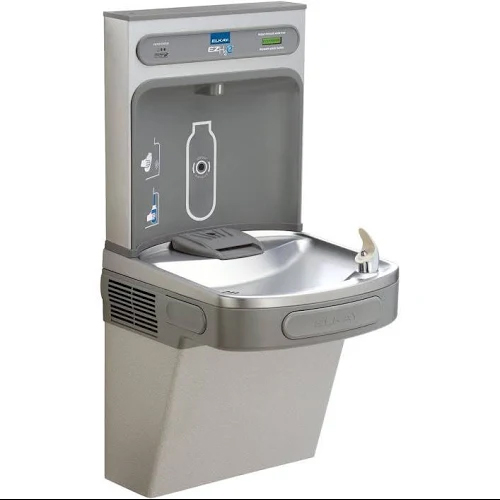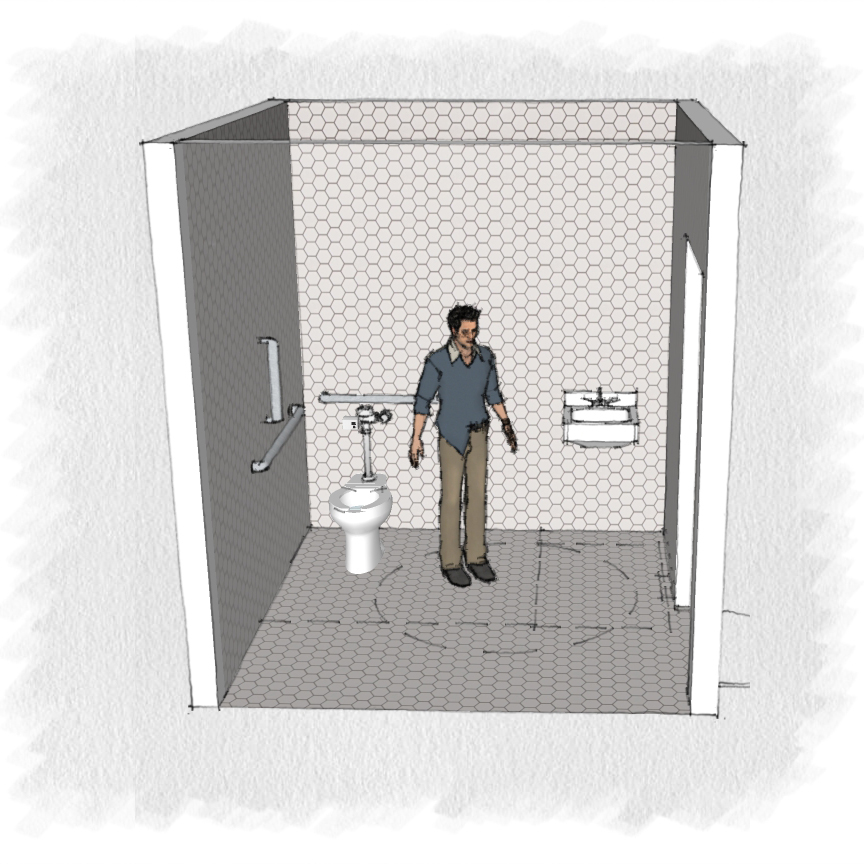
by Jeff Serbin | Oct 9, 2018 | ADA, architect in Arizona, Architectural Planning, Architecture, Blog, building code, Uncategorized
What is the Minimum size of a Bathroom? Does you current room meet ADA and building codes requirements? Are you building a new Bathroom and unsure of the correct size? Clearance and maneuverability is the driving factor to the size of a Bathroom. In a large building, may not big a big concern, as the percentage of area is minimal. When designing for a small commercial office or retail space, a Bathroom can take up valuable real estate.
As an Architect, I interact with clients, engineers and contractors who have acquired bits of information about Building Codes. Sometimes, those bits are misconceptions and regurgitated information. The building codes can be intimidating and have no beginning or end. To learn the code, the best way is jumping in feet first.
Upcoming Blog Posts
In the next series of blog posts, I will explore common Building Codes. Each City has adopted a code but most in Arizona use the IBC (International Building Code).
The following blog posts are:
- Door swing direction. Which way should the door swing, out of a room or in?
- Number of exits within a room?
- Door Size. Who said “size doesn’t matter.”
- Exit corridor width. How narrow can a hallway be?
- Clearances around a door? Door arrangement between two doors.
- Door fire ratings. What is the rating?
- Exit Travel Distance
- Do I need an elevator?
- Should my door have panic hardware?
- Do I need a drinking fountain?
- Minimum size of a Bathroom?
- Small commercial space, is one bathroom enough?
The item in bold are addressed in this post. As an Arizona Architect, most City’s jurisdictions work with the IBC (International Building Code). This code analysis is based upon the IBC.
Minimum Size of a Bathroom?
When designing a building, creating an efficient plan is important. Having a little extra space in an office, conference room or lobby is not a big problem. Who wants to have wasted space in a Bathroom? It really becomes critical when designing smaller spaces. In retail or office spaces ranging from a few thousand square feet, a Bathroom can take up valuable real estate.
Size of a Bathroom depends on orientation of the fixtures and the swing of the door, swing meaning into the room or out. See “door swing direction” blog for more information.
A few rule of thumbs for Bathrooms:
Rule # 1 – Doors shall not swing into the clear space or required clearance for any plumbing fixture. Fixtures would be mainly toilet and the sink. What is the clearance around a toilet or sink you may ask? They are as follows:
- Sink clearance – 30″ wide x 48″ deep (shown dashed on floor plans below). Note – Knee clearance can extend under a sink 25″ maximum, assuming you have a wall hung sink.
- Toilet clearance – 60″ wide x 66″ deep (shown dashed on floor plans below)
Rule # 2 – Required clear floor spaces, clearance at plumbing fixtures and turning space shall be permitted to overlap.
- Turning space – 60″ diameter circle within rest room.
Graphic examples of typical Bathroom with one toilet in varying configurations. Note that in all examples, door swing does not encroach on plumbing fixture clearances.
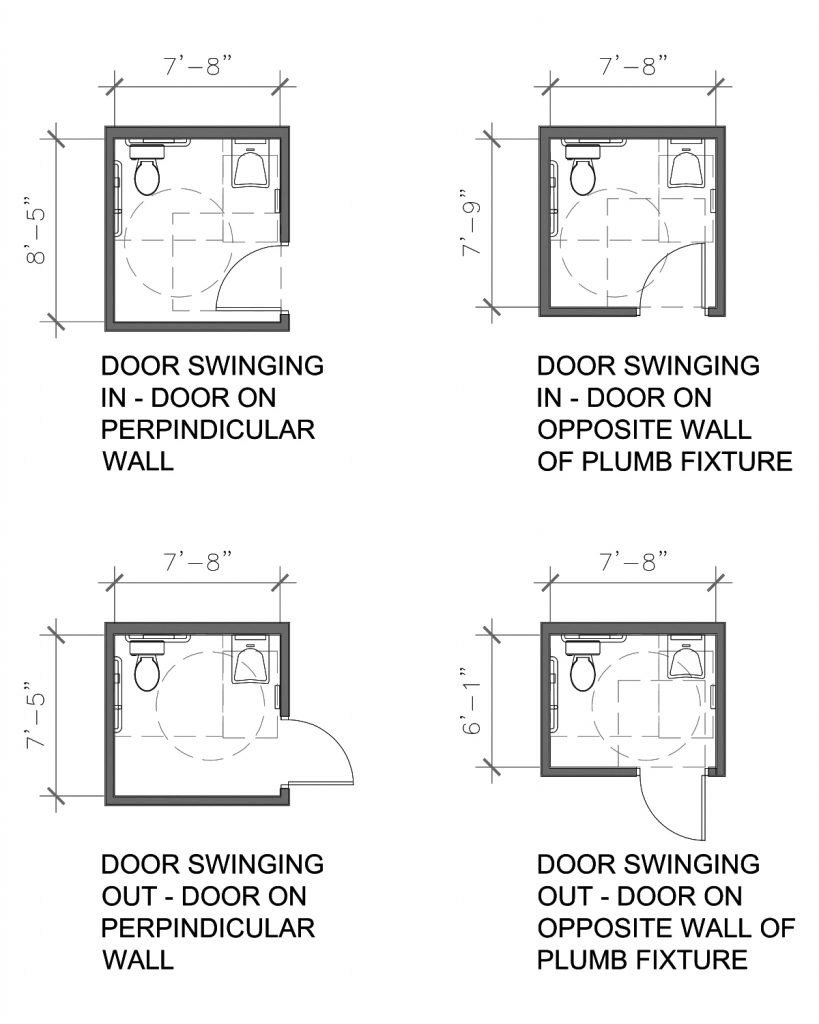
Minimum Size of a Bathroom
When swinging the door out of the room, it is possible to make the room the the smallest. I typically like to make the room just a tad bit larger than required by 1″ – 2″ to take into account construction tolerances and to make sure thickness of materials (ie. tile) or other unforeseen items don’t create a conflict.
Summary
When creating a new single person Bathroom, make it as efficient in size. Not only are you saving space in a building, it is more cost effective use of building materials. The ADA is a driving factor for the minimum size of a Bathroom. Plumbing fixture clearances are designed so occupants can easily use the restroom whether able bodies or in a wheelchair. Follow the examples above for reference but as always, refer to the local jurisdiction, the current ADA guidelines and a local professional to ensure your projects success.

by Jeff Serbin | Sep 11, 2018 | ADA, Architecture, Blog, building code, Uncategorized
Do I need a drinking fountain? As an Architect, I interact with clients, engineers and contractors who have acquired bits of information about Building Codes. Sometimes, those bits are misconceptions and regurgitated information. The building codes can be intimidating and have no beginning or end. To learn the code, the best way is jumping in feet first.
Upcoming Blog Posts
In the next series of blog posts, I will explore common Building Codes. Each City has adopted a code but most in Arizona use the IBC (International Building Code).
The following blog posts are:
- Door swing direction. Which way should the door swing, out of a room or in?
- Number of exits within a room?
- Door Size. Who said “size doesn’t matter.”
- Exit corridor width. How narrow can a hallway be?
- Clearances around a door? Door arrangement between two doors.
- Door fire ratings. What is the rating?
- Exit Travel Distance
- Do I need an elevator?
- Should my door have panic hardware?
- Do I need a drinking fountain?
- Minimum size of a single person toilet room?
- Small commercial space, is one bathroom enough?
The item in bold are addressed in this post. As an Arizona Architect, most City’s jurisdictions work with the IBC (International Building Code). This code analysis is based upon the IBC.
Do I need a drinking fountain?
Do you ever wonder when you need an automatic drinking fountain in your office, your store, your warehouse?

The building codes IBC (International Building Code) and IPC (International Plumbing Code) both discuss when a drinking fountain is required. Local jurisdiction may have overriding amendments. The information below states the requirements as interpreted from the current 2018 IBC/IPC.
CODE
Drinking fountains are required in all occupancy types except:
- Hotels
- Motels
- Boarding houses
- Residential apartments
The quantity of drinking fountains vary dependent on occupancy type, however the range is from 1 per 100 to 1 per 1,000. The following are the basic requirements:
- Drinking Fountain is not required in small occupancies per 2018 IBC/IPC for occupant loads less than 15.
- Per City of Phoenix Code Amendments, Drinking Fountains are not required for occupant loads less than 50. – Check local jurisdiction to determine code amendments.
- Where drinking fountains are required, not fewer than two drinking fountains shall be provided. One fountain to comply with wheelchair (36″ max. spout a.f.f.) and one for standing (~40″).
Exceptions or substitution:
- Restaurants which provide drinking water for free are not required to have drinking fountains
- Water dispensers shall be permitted to be substituted for not more than 50% of the required number of drinking fountains. (Interpretation – Drinking fountain with a bottle filler option, would satisfy the requirement for two drinking fountains).
- Drinking fountains shall not be required in tenant spaces provided that public drinking fountains are located within 500 feet and not more than one story above/below tenant space.
- In covered or open malls, drinking fountains shall not be required in tenant spaces provided that they are located within 300 feet.
Products
As water bottles have become more popular, bottle filling drinking fountain stations have become more prominent. In 2010, Elkay introduced a new drinking fountain. It was in response to consumer demand and environmental concerns of disposable bottles.
The product notifies the number of water bottles saved. Product notifies user to change filter as needed. This ensures and reinforces to the user that the water is safe to drink.
ADA
At least one drinking fountains installed must meet ADA requirements. Spout height at 36″ above finish floor maximum.
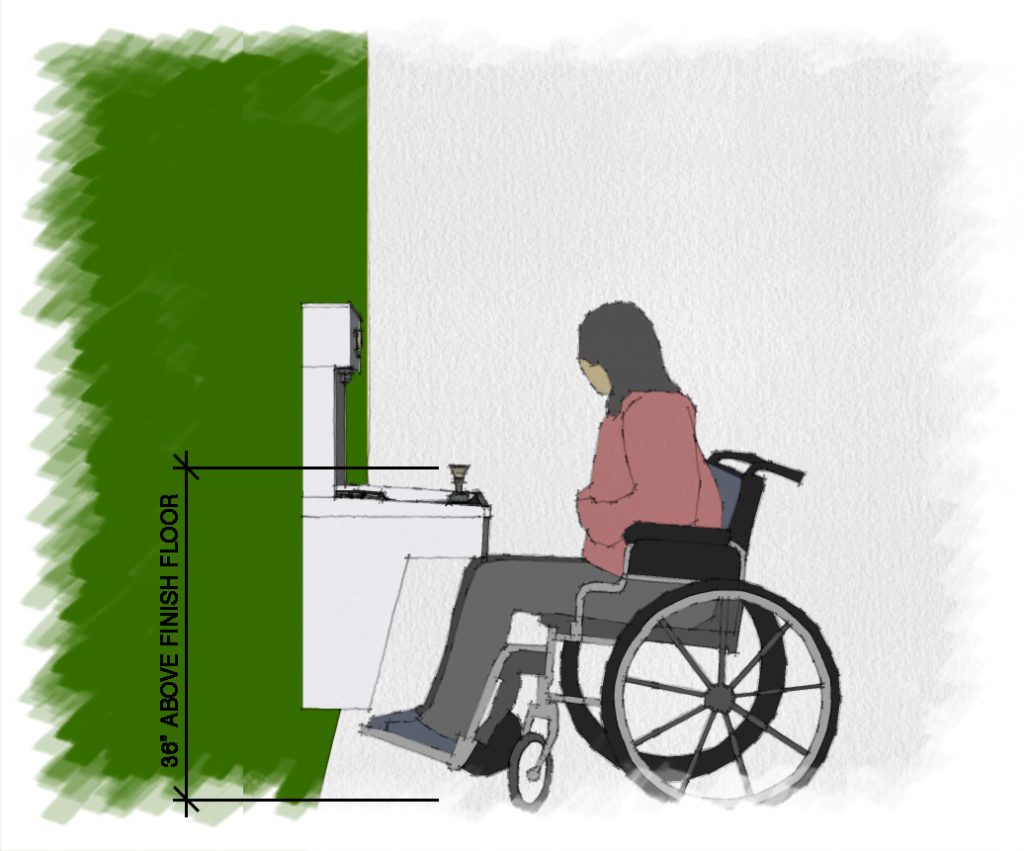
ADA sketch
The 2010 ADA standards does indicate, Section 211.2 Minimum Number – No fewer than two drinking fountains shall be provided. One drinking fountain shall comply with 602.1 through 602.6 and one drinking fountain shall comply with 602.7.
Exception: Where a single drinking fountain complies with 602.1 through 602.7, it shall be permitted to be substituted for two separate drinking fountains.
So what does 602.7 change to make it possible for one drinking fountain. Essentially the Spout has to be between 38″ minimum and 43″ maximum above the finish floor. This is higher than what is depicted in section 602.4 Spout height, which indicates 36″ a.f.f.
Summary
Do I need a drinking fountain? Drinking fountains are essentially required unless you have minimum occupants. Less than 15 occupants per IPC code and in some jurisdictions, such as Phoenix, less than 50 occupants. Where a drinking fountain is required, fixtures need to meet ADA requirements.
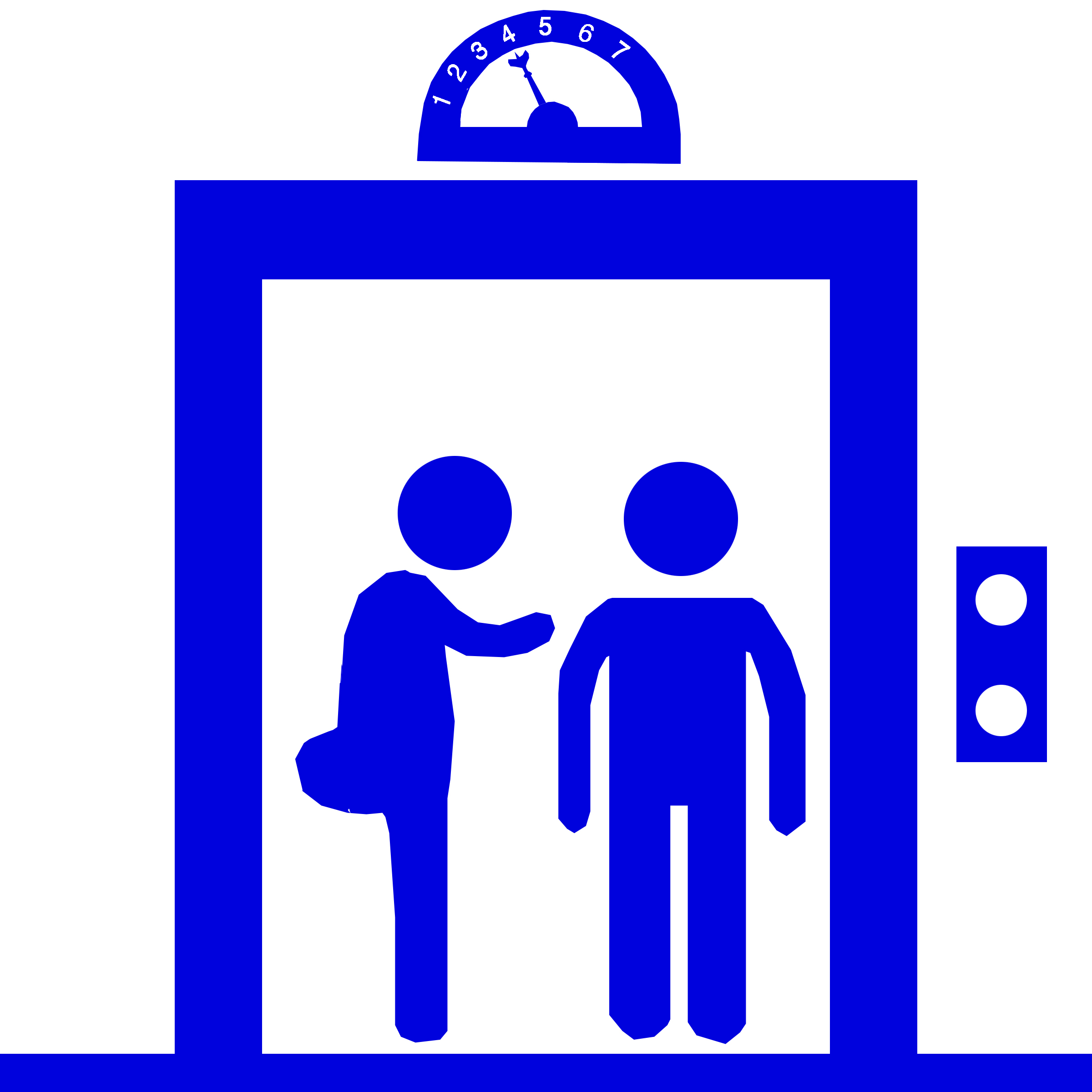
by Jeff Serbin | Aug 22, 2018 | ADA, Blog, building code, Uncategorized
Do I need an Elevator? – Building Codes
As an Architect, I interact with clients, engineers and contractors who have acquired bits of information about Building Codes. Sometimes, those bits are misconceptions and regurgitated information. The building codes can be intimidating and have no beginning or end. To learn the code, the best way is jumping in feet first.
Upcoming Blog Posts
In the next series of blog posts, I will explore common Building Codes. Each City has adopted a code but most in Arizona use the IBC (International Building Code).
The following blog posts are:
- Door swing direction. Which way should the door swing, out of a room or in?
- Number of exits within a room?
- Door Size. Who said “size doesn’t matter.”
- Exit corridor width. How narrow can a hallway be?
- Clearances around a door? Door arrangement between two doors.
- Door fire ratings. What is the rating?
- Exit Travel Distance
- Do I need an elevator?
- Should my door have panic hardware?
- Do I need a drinking fountain?
- Minimum size of a single person toilet room?
- Small commercial space, is one bathroom enough?
The item in bold are addressed in this post. As an Arizona Architect, most City’s jurisdictions work with the IBC (International Building Code). This code analysis is based upon the IBC.
Do I need an Elevator?
Most 2+ story buildings have elevators. Every once in a while, you may come across an older building that does not have an elevator. When is an elevator required by code?
Per the IBC, at least one accessible route ‘Elevator’ shall connect each accessible level, including mezzanines, in multilevel buildings except:
“Areas not greater than 3,000 square feet and are located above or below accessible levels.”
Exceptions:
- Group M (Mercantile) occupancies containing five or more tenant spaces
- Levels containing offices of health care providers
- Passenger transportation facilities and airports
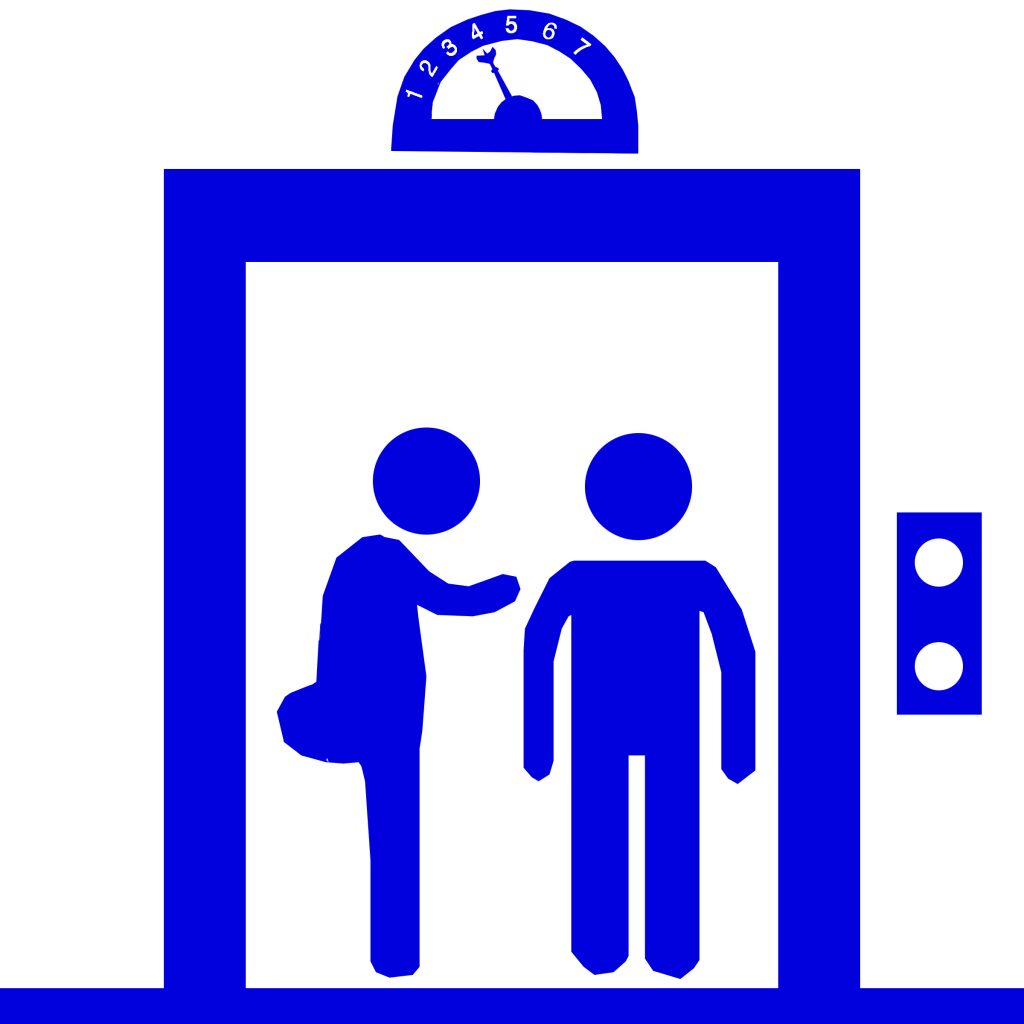
Per ADA, Elevators are the most common way to provide access in multistory buildings. Exceptions:
“Elevators are not required in facilities under three stories or with fewer than 3,000 square feet”
Exceptions:
- Shopping Center or mall
- Professional office of health care provider
- Public transit station
- Airport passenger terminal
Examples
Scenario 1 – A four-story building has 2,900 square feet per floor. An elevator is not required because each floor is less than 3,000 square feet
Scenario 2 – A four-story building has 3,500 square feet on first floor and 2,500 square feet on each of the other floors. An elevator is required. (All of the stories must be under 3,000 square feet to quality for the exemption.)
Scenario 3 – A two-story building will be used as a real estate office. There will be bathrooms on both ground floor and second floor. Stories are less than 3,000 square feet each. Elevator not required due to exemption. Do the restrooms on second floor need to be ADA compliant? Yes. Restroom on second floor regardless of elevator exemption must be ADA compliant. Why you may ask? There are individuals who may walk up stair using crutches. In addition, ADA contains accesbility features for individuals with disabilities other than those who use wheelchairs.
Definition – “Story” – “Occupiable’ space, designed for human occupancy and equipped with one or more means of egress, light and ventilation. Basements is an occupiable space. Mezzanines are not stories. They are levels within stories.
Summary
Do I need an Elevator? Elevators are not required in all buildings greater than 2 stories. Buildings with footprints less than 3,000 square feet may qualify for an exemption. However all other components (restrooms, counter top heights, door clearances etc.) upon the stories will need to comply with ADA requirements
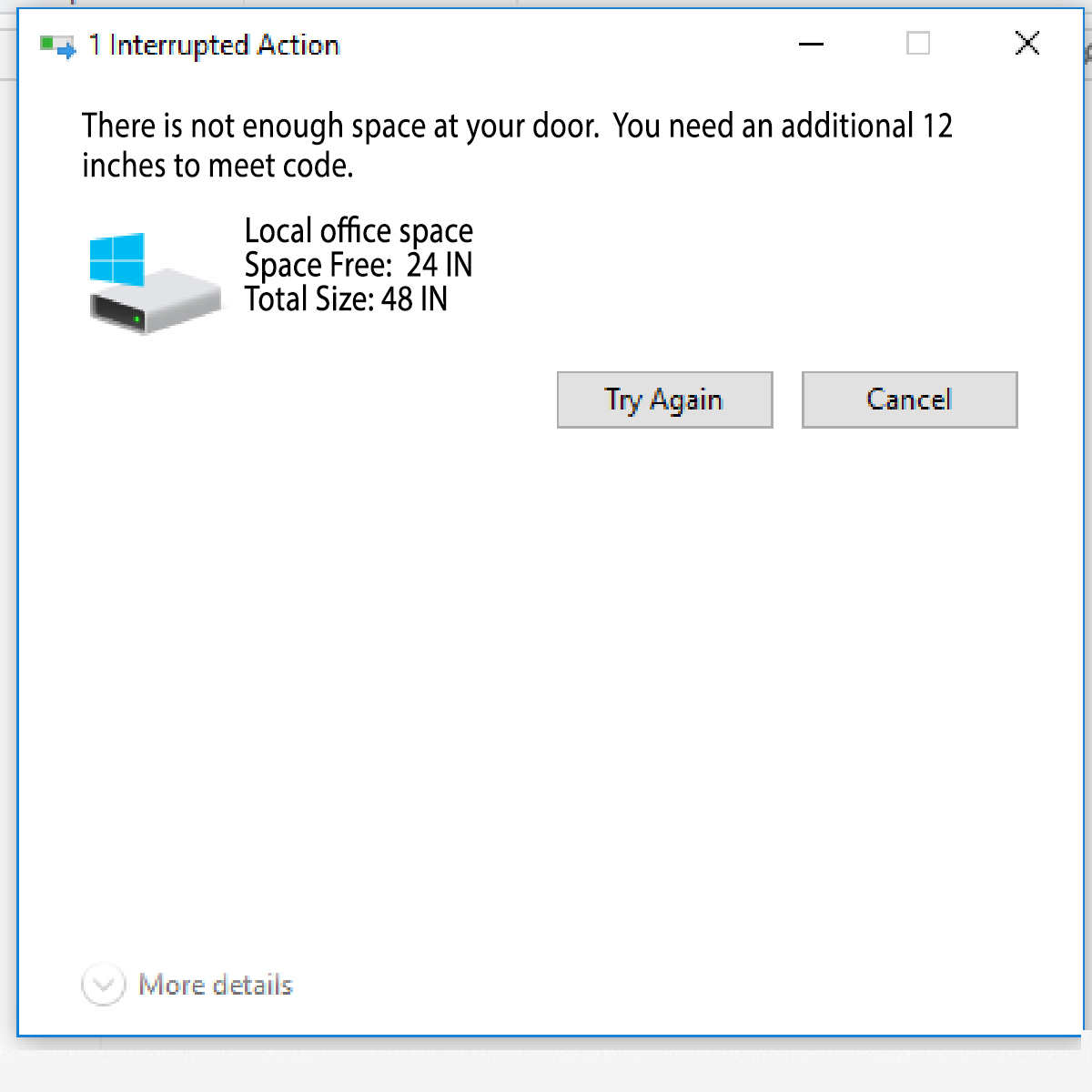
by Jeff Serbin | Aug 15, 2018 | ADA, Architectural Planning, Architecture, Blog, building code, door, Uncategorized
Clearance around a door – Building Codes
As an Architect, I interact with clients, engineers and contractors who have acquired bits of information about Building Codes. Sometimes, those bits are misconceptions and regurgitated information. The building codes can be intimidating and have no beginning or end. To learn the code, the best way is jumping in feet first.
Upcoming Blog Posts
In the next series of blog posts, I will explore common simple and more complex Building Codes. Each City has adopted a code but most in Arizona use the IBC (International Building Code).
The issues to be addressed in the following Blog Posts are:
- Door swing direction. Which way should the door swing, out of a room or in?
- Number of exits within a room?
- Door Size. Who said “size doesn’t matter.”
- Exit corridor width. How narrow can a hallway be?
- Clearances around a door? Door arrangement between two doors.
- Door fire ratings. Is your door fire rated?
- Exit Travel Distance.
- When is an elevator required?
- Should my door have panic hardware?
- Do I need a drinking fountain?
- Minimum size of a single person toilet room?
- Small commercial space, is one bathroom enough?
The item in bold is addressed in this post. As an Arizona Architect, most City’s jurisdictions work with the IBC (International Building Code). The code analysis is based upon the IBC.
Clearances Around a Door
The ADA (American with Disabilities Act), established in 1990 and in affect in 1988, establishes the minimal clearances required around a door to allow the building occupant to easily approach and open a door with ease. It begin when parents of children with disabilities who began to fight against the exclusion or segregation of their children to minimize the barriers created within public buildings.
The door clearances are depicted in the following vignettes. Click on image for enlarged view.
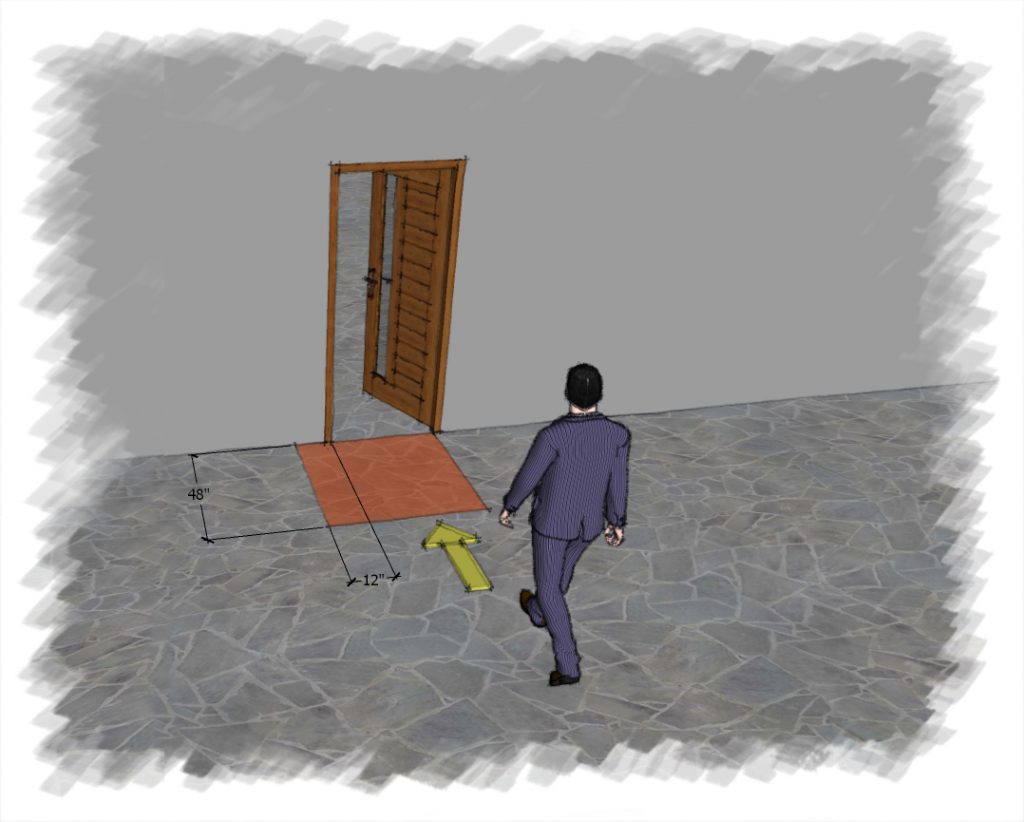
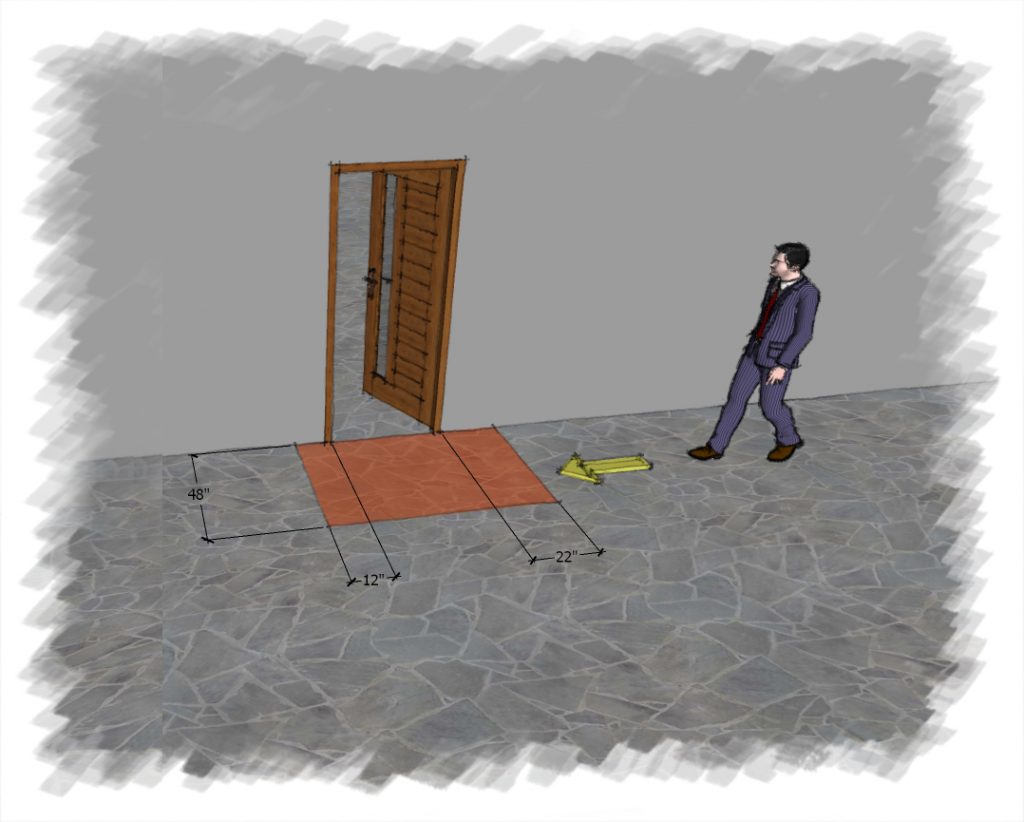
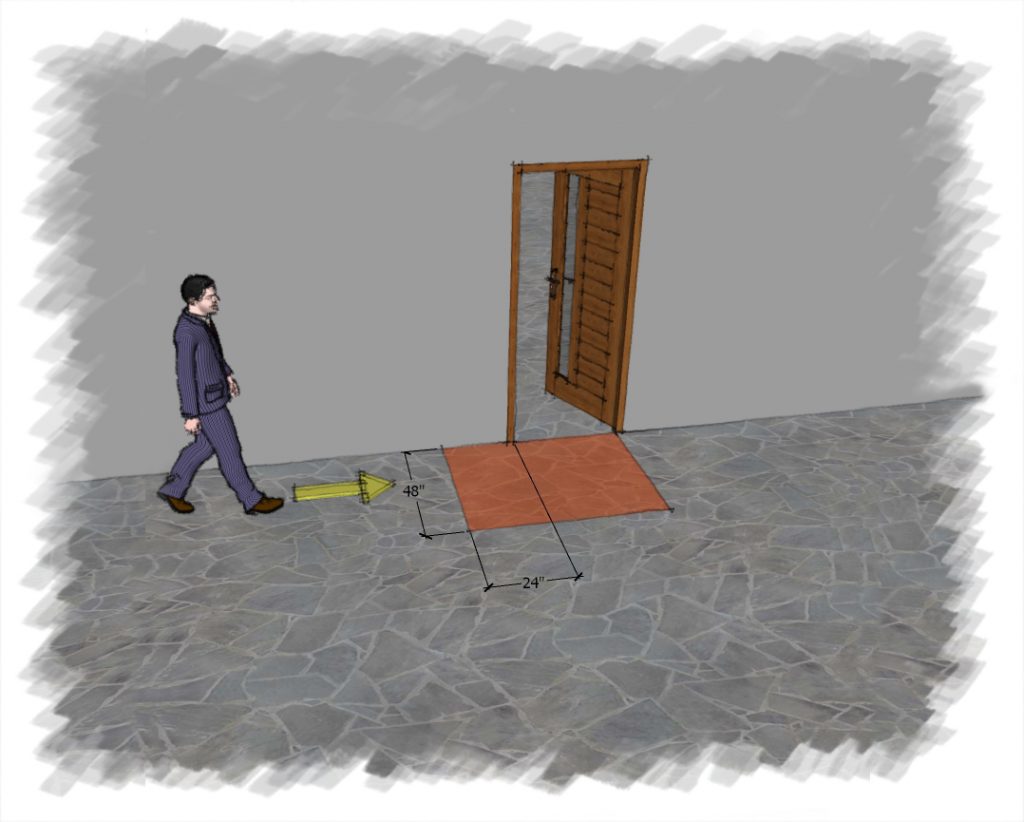
Door Swinging OUT or in direction of travel
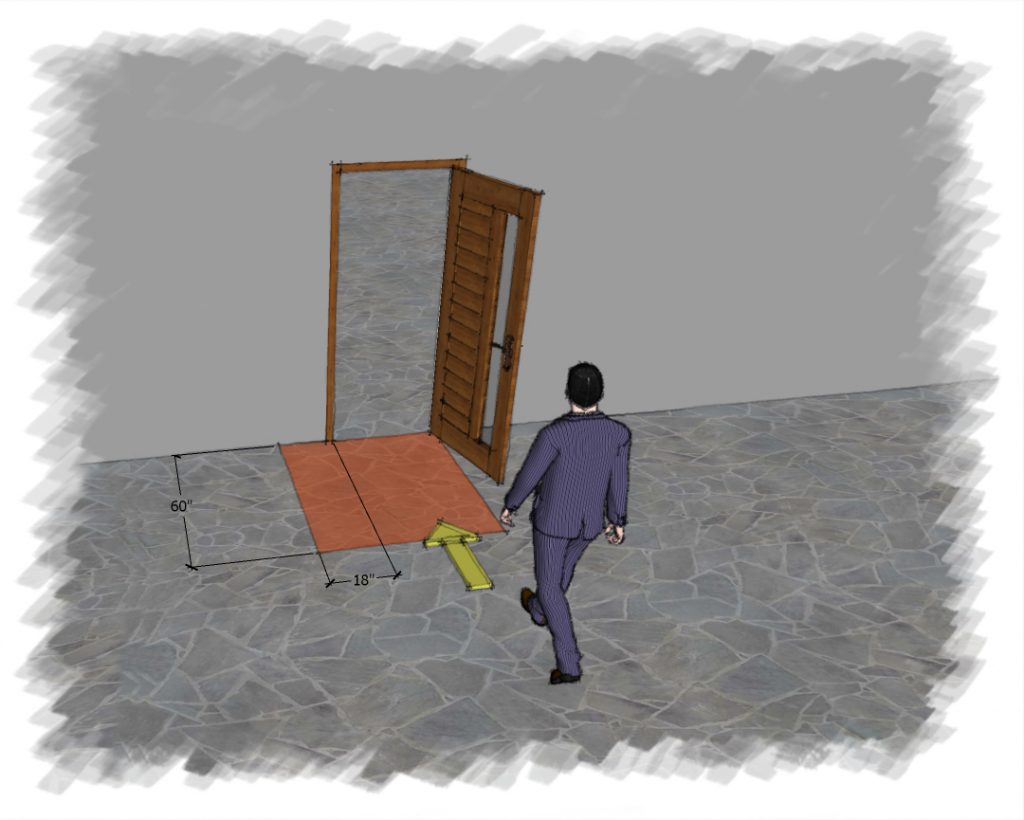
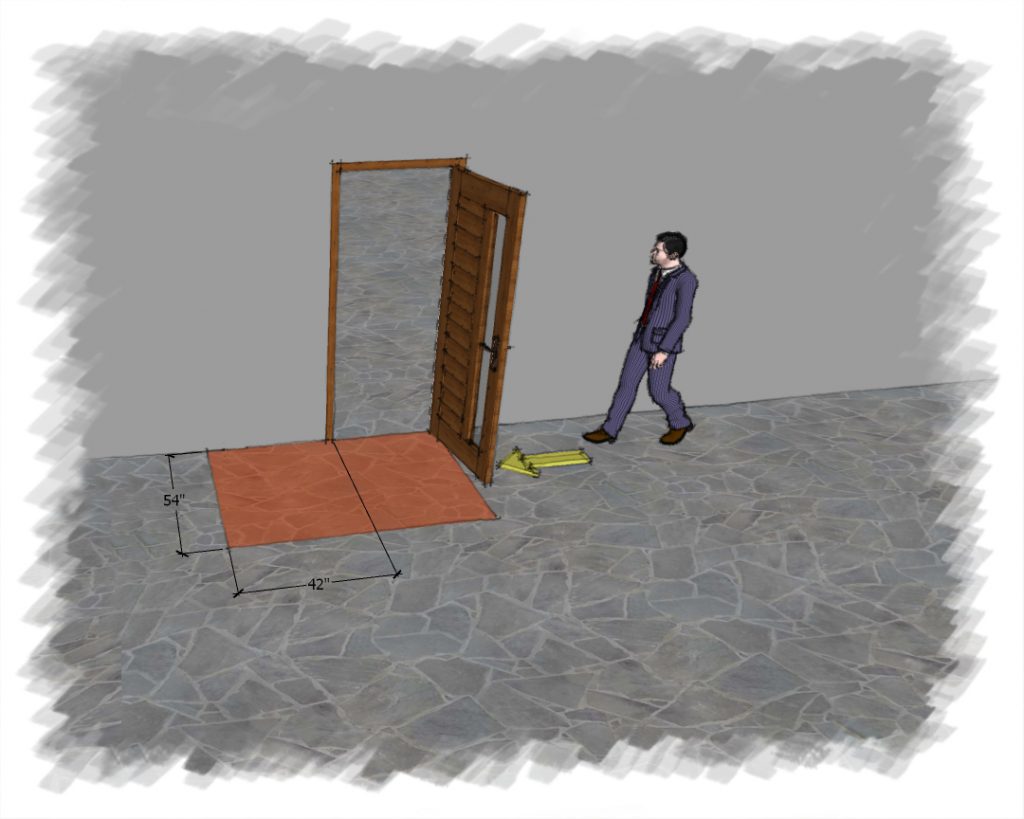
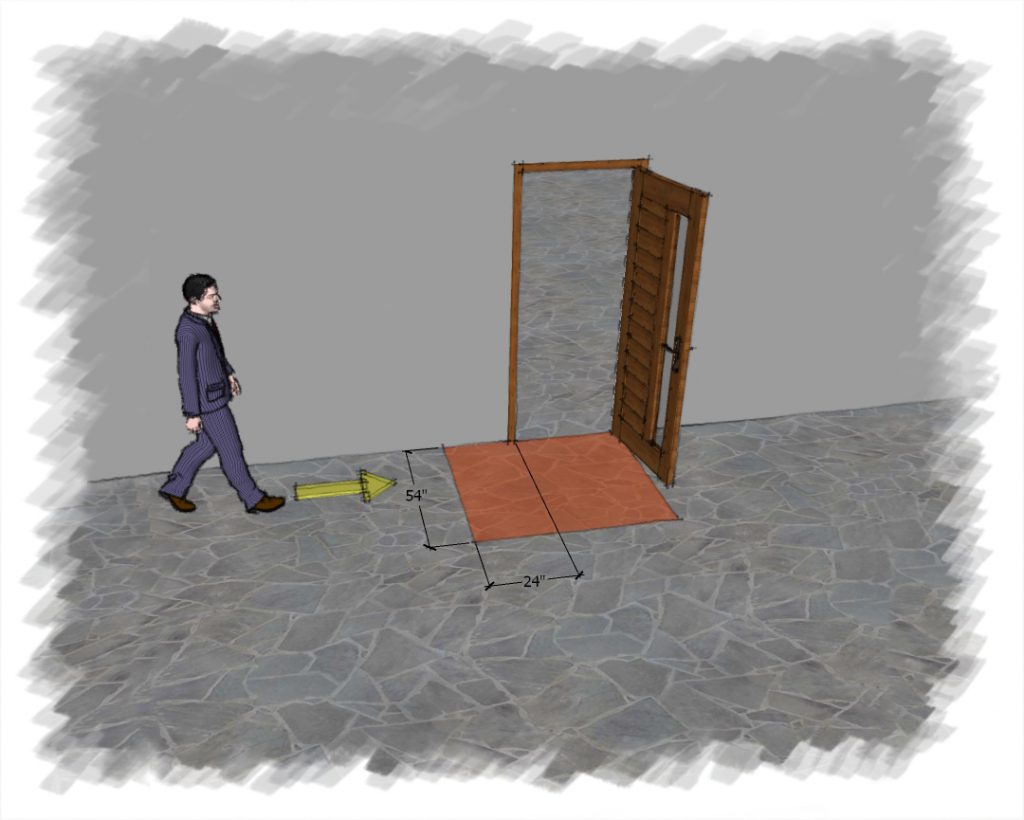
Door Swinging IN
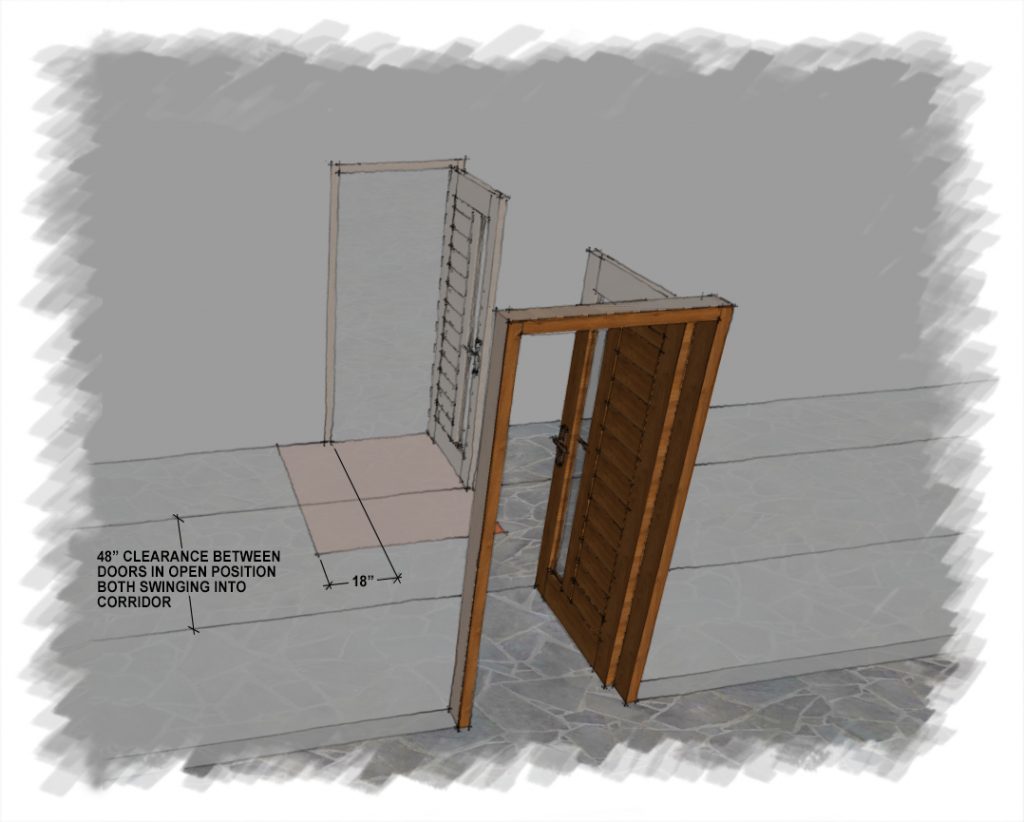
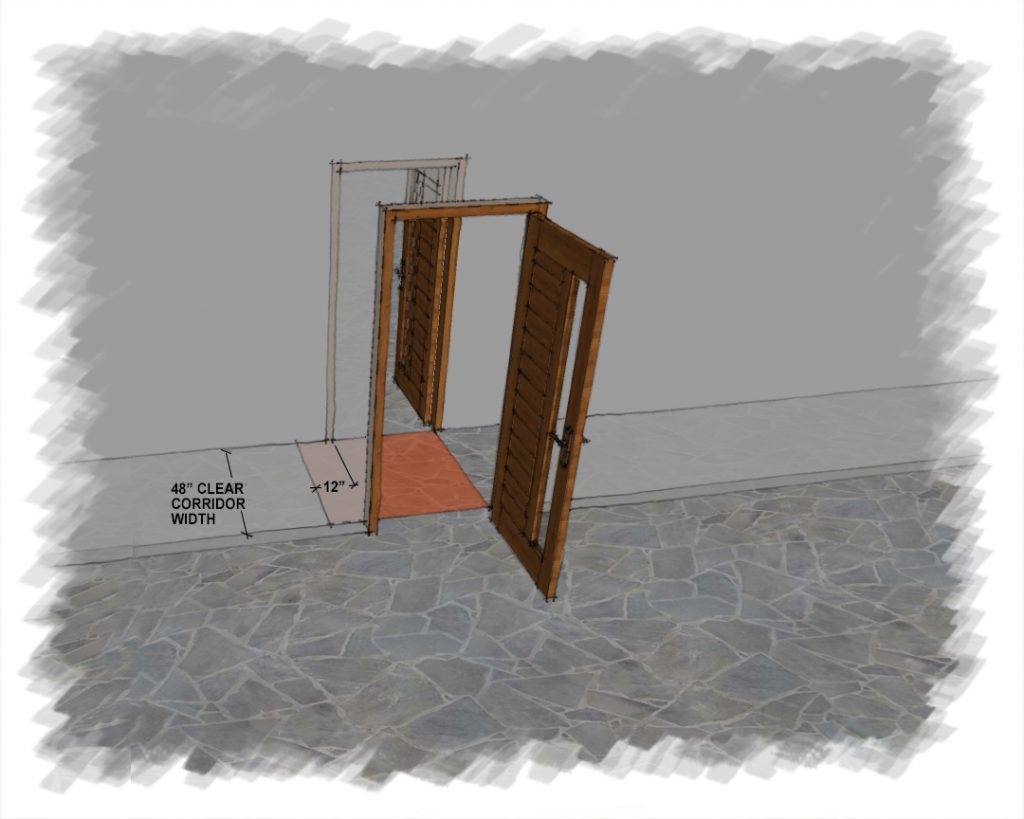
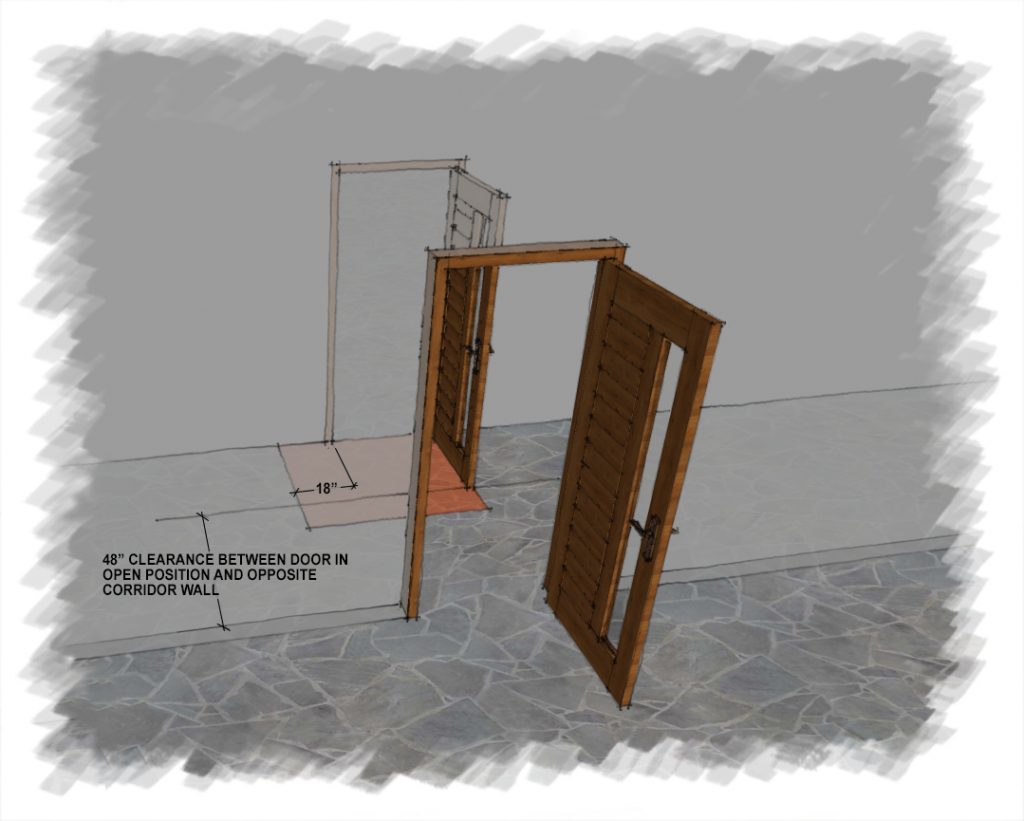
Both doors swing in Both doors swing out Door swinging in same direction
Summary
Clearance around a door is established by the ADA. The clearances allow for the ease of an occupant to open and pass through a door opening, whether on foot, in a wheelchair or using crutches. A door which swings inward generally increases the required clearances as shown on images above. Other effects like door closures, automatic door openers can affect the operation of a door, however maintaining the shown clearances makes it easier for the occupants and satisfies the current codes established.
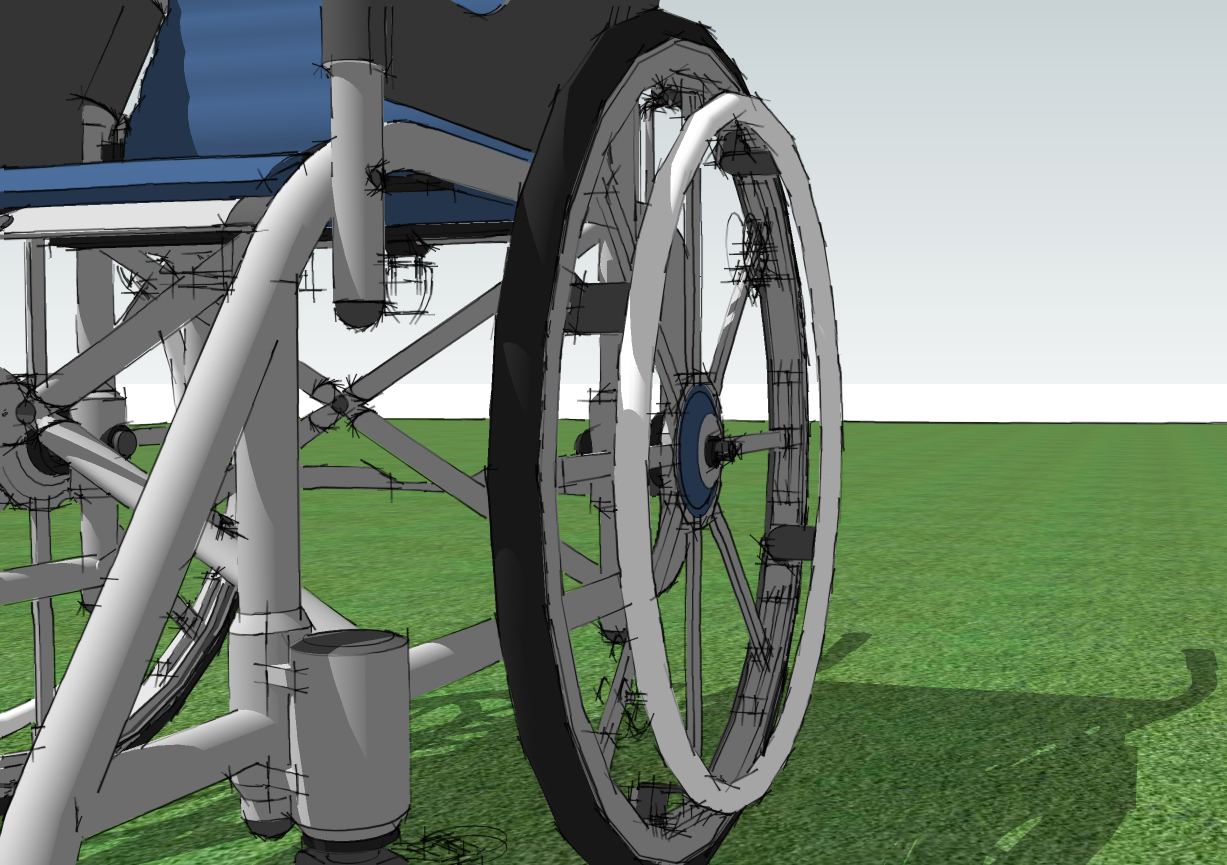
by Jeff Serbin | Aug 10, 2018 | ADA, architect in Arizona, Blog, building code, Uncategorized
You may be eligible for an ADA Renovation Tax credit? If you determine that your existing building does not comply with current ADA Act of 1990, you may be able to get some tax credits of up to $15,000 per year.
The ADA Renovation Tax credit associated to building upgrades may apply to the following:
- To remove barriers that prevent a business from being accessible
- Provide qualified interpreters or other methods of making audio materials available to hearing-impaired individuals
- Provide qualified readers, taped texts and other methods of making visual materials available to individuals with visual impairments
- Acquire or modify equipment or devices for individuals with disabilities
Items in gray applicable to non-building items. If the building you are occupying was built after Nov 5, 1990, item 1 would not apply. About 50% of all building in the United States were built prior to 1980.
A list of common items requiring upgrades
- ADA parking spaces & signage
- No van accessible parking space
- Accessible entrance – Physical site barriers from parking area to front door of building. (Curbs, improper sidewalk slopes, stair treads versus ramps etc.)
- Transaction counter at front reception not in compliance
- Break room or customer lounge counter top heights not in compliance
- Required door clearances. See blog post.
- Clearances or mounting heights at drinking fountains
- Restroom not accessible – Room size, lavatory clearances, grab bars, restroom accessories mounting heights or locations, mirror height not in compliance etc.
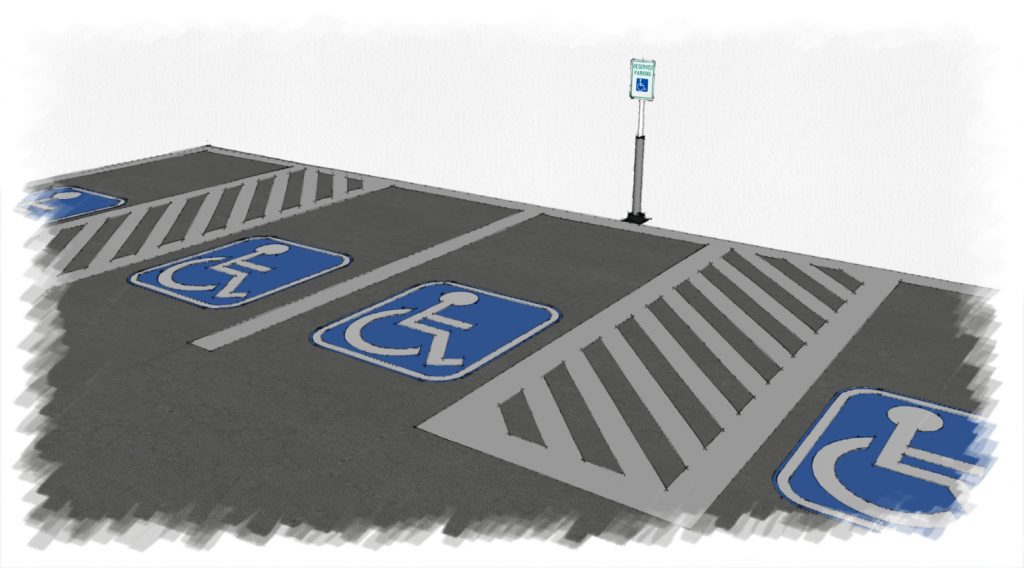
ADA RENOVATION TAX CREDIT
ADA Renovation Tax credit – To assist businesses with complying with the ADA, Section 44 of the IRS Code allows a tax credit for small businesses and Section 190 of the IRS Code allows a tax deduction for all businesses.
The tax credit is available to businesses that have total revenues of $1,000,000 or less in the previous tax year or 30 or fewer full-time employees. This credit can cover 50% of the eligible access expenditures in a year up to $10,250 (maximum credit of $5000). The tax credit can be used to offset the cost of undertaking barrier removal and alterations to improve accessibility; providing accessible formats such as Braille, large print and audio tape; making available a sign language interpreter or a reader for customers or employees, and for purchasing certain adaptive equipment.
The tax deduction is available to all businesses with a maximum deduction of $15,000 per year. The tax deduction can be claimed for expenses incurred in barrier removal and alterations.
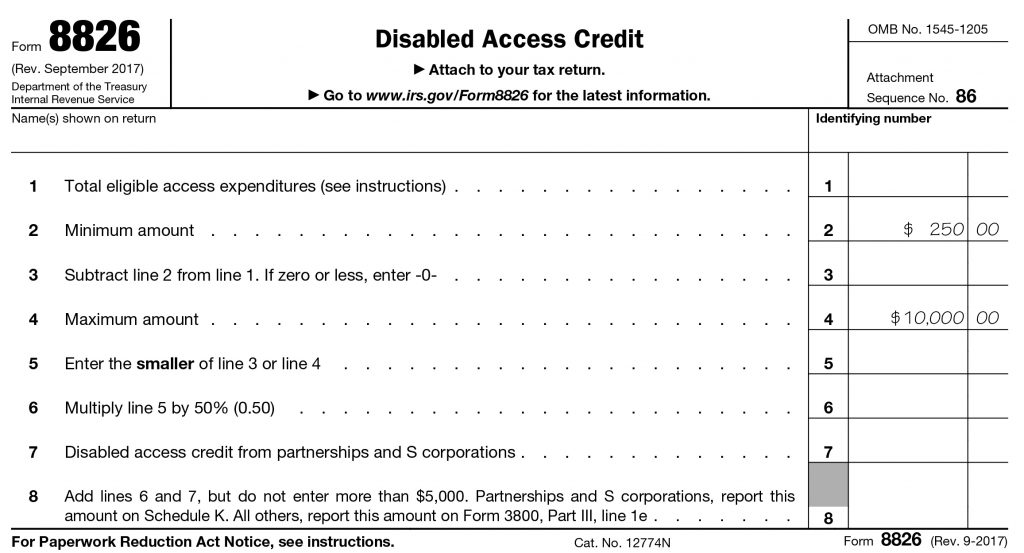
Disabled Access Credit
HOW / WHEN TO COMPLY
If you uncover a noncompliance issue or are informed of an issue by a building user, Don’t Panic! I suggest to show compassion and sincerity to the person it affects and acknowledge the issue. Let them know that it is your intent to remedy the issue. Whatever you do, don’t ignore the issue and hope it will go away. The best course of action is to educate yourself with the ADA to understand the issue. Hire an architect to determine the issue and solutions to the specific problem.
If you are close to the required dimension, such as mounting heights or clear space, the recommendation is to remedy the issue. A local building office may imply that it is close enough.However the jurisdiction of the ADA is a Justice Department issue. I recommend exceeding the margin by a comfortable amount. When designina g building, slightly exceed minimum requirements. Try to exceed the required at minimum by a margin of 1″. Tolerances in construction can affect an overall dimension. If the contractor gets a little sloppy, exceeding the minimum requirements allows for some wiggle room for error.
SUMMARY
More than 50% of the building in use were built prior to 1980 in the United States. It is likely that a component of the building, such as a physical barrier on the site could be present. Elements within the building, such as restrooms accessories, may not be in compliance with the ADA Act of 1990. If you become aware of a conflict, these necessary upgrades required by the ADA may be a eligible for an ADA Renovation Tax credit. This will enable one to upgrade that building component so it is functioning properly. I will reduce some impact of the construction cost or check this site building a brand in payday they can help you with building finance.
Contact an architect or ADA specialists to assist you.




